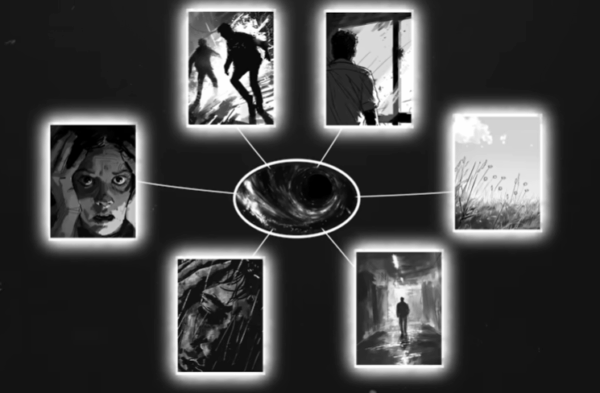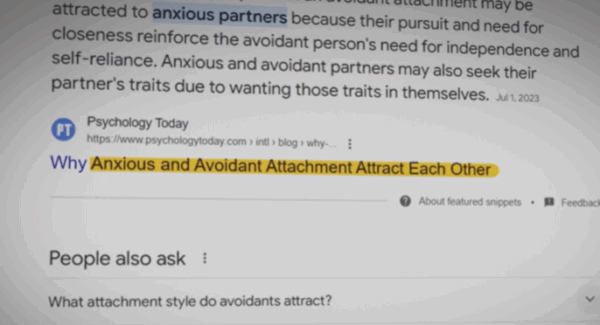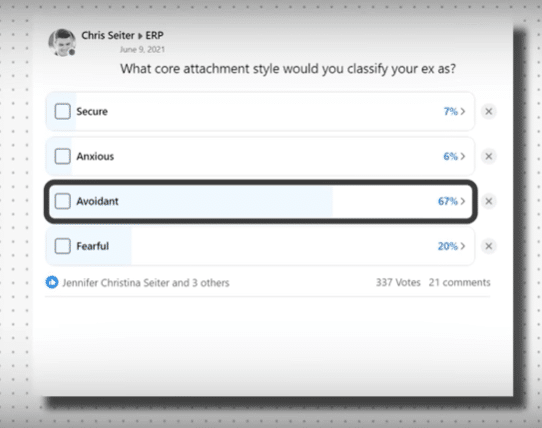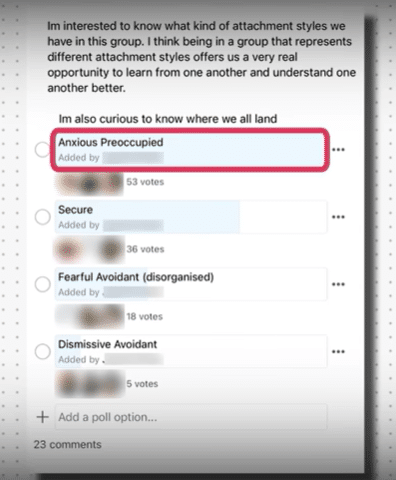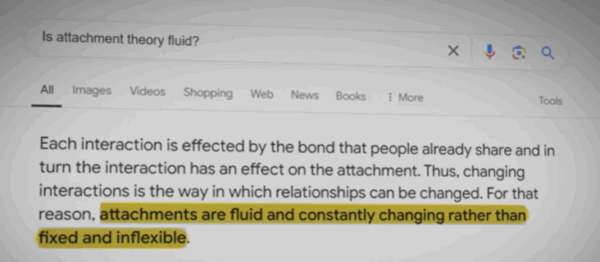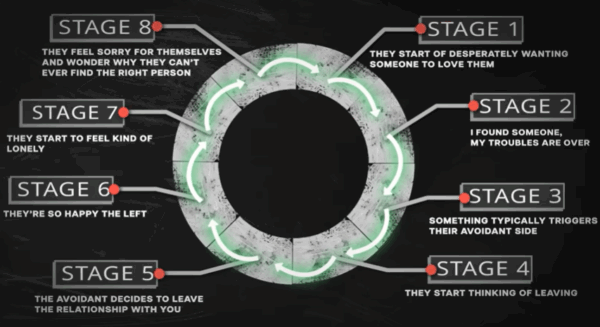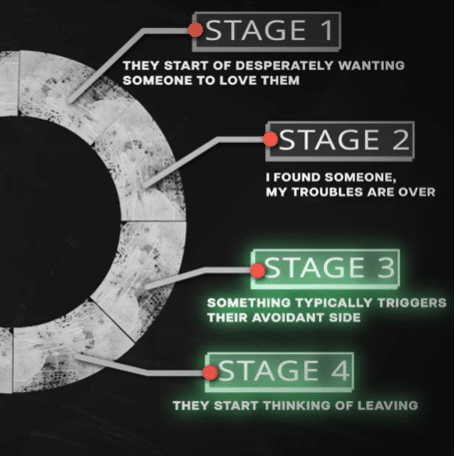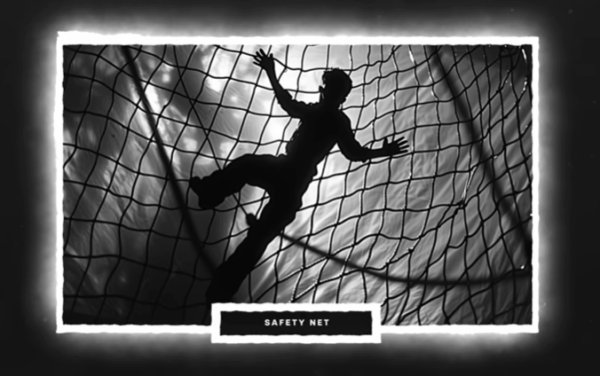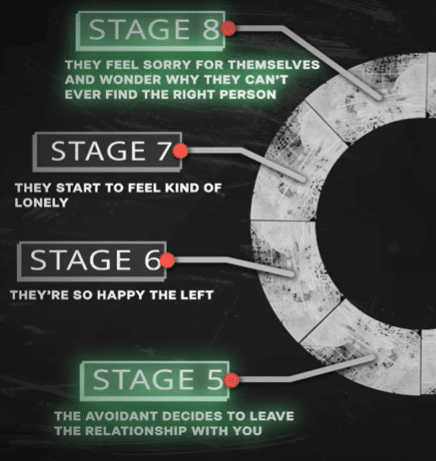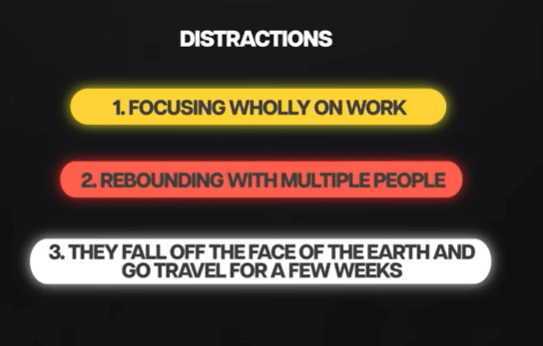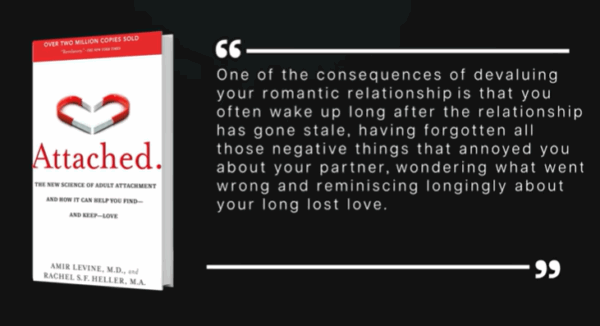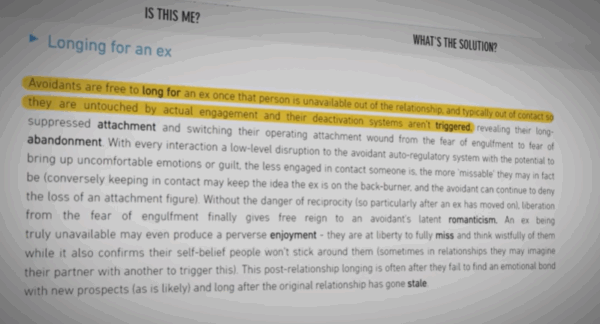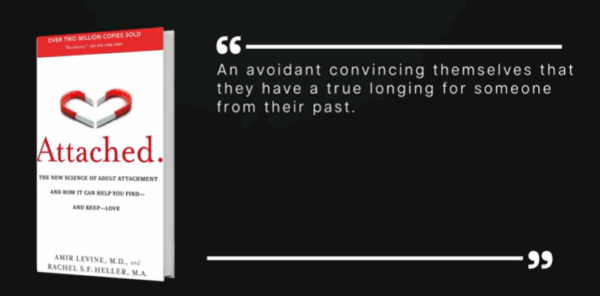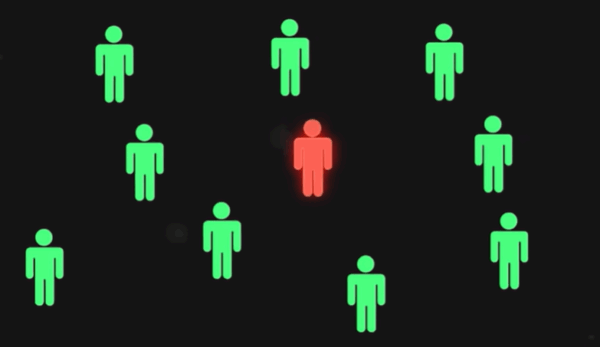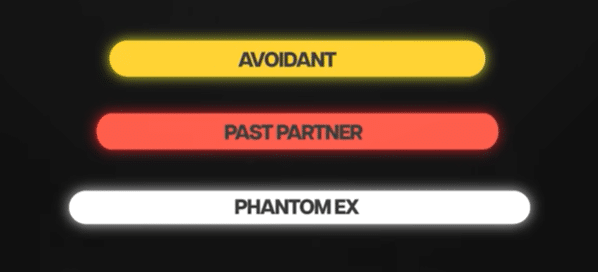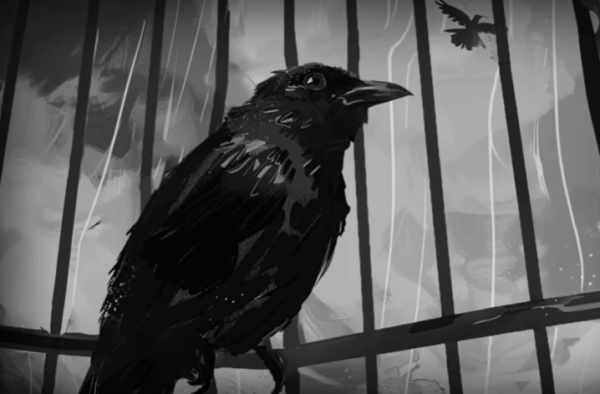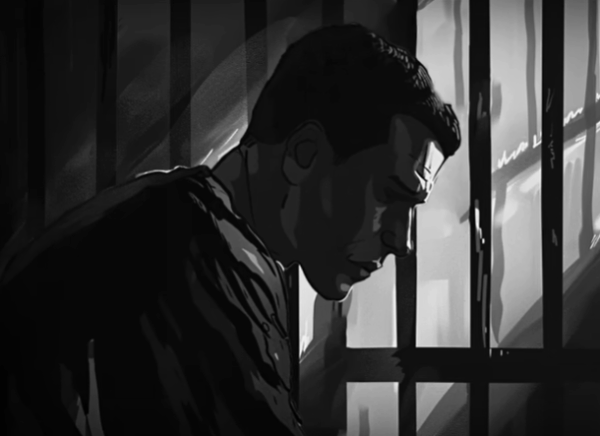Most people think that the reason avoidants come back to you after they lose you is some combination of:
- You using No Contact.
- Seeking Comfort in Familiar Surroundings, OR,
- They Were Seeking Freedom.
Now, this isn’t technically wrong but there’s a lot more nuance to it than most people let on.
This is my “Black Hole Theory,” and I think it’s the reason most avoidants come back after they lose you.
There’s a lot going on in this graphic, so let’s just start at the beginning with:
Stage One: How Secure Partners Become Anxious
Many people believe that avoidants are naturally drawn to anxious attachment styles.
I mean, just look at the top Google results,
It’s always some variation of “Avoidants are drawn to anxious attachment styles.”
But I think my perspective is a little different.
Now, don’t get me wrong. I’m not saying that avoidants aren’t drawn to anxious people, they clearly are.
However, I’m actually wondering if we have a bit of a chicken and egg situation here. You know that old adage,
What came first, the chicken or the egg?
Look at this, this was a poll I conducted in 2021 where I asked my clients what they believed their exes attachment style was.
- As you can see the predominant attachment style most of my clients believe their exes have is dismissive avoidant.
I also conducted another poll back in 2021, where I asked those same clients what they believed their attachment style was.
- As you can see, most believe they are anxiously attached.
But then I started thinking through the data and comparing it to what I was hearing on coaching calls and it added another layer to this whole thing.
You see, most clients would tell me they were anxious, but only after first telling me that they used to be secure.
So, what is going on here?
Well, let’s go back to our “black hole” graphic and move on to:

What Are Your Chances of Getting Your Ex Boyfriend Back?
Take the quizSTAGE TWO: The Attachment Battle
One of the things I love most about attachment theory is the fact that they are fluid.
They can change based on circumstance or partner.
Now, this circle (left) represents you, you are a secure attachment style. I’m going to color it green, because green represents balance, harmony, and emotional stability.
Next, the other circle (right) represents your partner, and they’re an avoidant attachment style. I’m going to color it gray, because gray represents a detached nature.
Now, here’s what happens when they collide. A subtle battle will play out.
At first, things might seem fine, but over time, the avoidant’s need for emotional distance starts to clash with your need for connection.
It starts with the Avoidant Retreat:
- The avoidant will pull away. Maybe they start to become distant, unresponsive, or shut down emotionally. This triggers uncertainty in you. You, as a secure partner, might try to close that gap
- Which of course causes the avoidant to push back. The more you try to close that distance, the more the avoidant partner retreats, creating a feedback loop. You start to feel confused, wondering if you’ve done something wrong or why they seem to shut you out.
This tension keeps building until one of three things happens:
- The Secure Becomes Anxious (Avoidant Wins): You, the secure partner, begin to feel anxious. You weren’t like this before, but now you feel uneasy, constantly questioning the relationship and seeking validation. In this scenario, the avoidant attachment style has ‘won,’ pulling you into a more anxious space, as you chase after the connection they keep at arm’s length.
- The Avoidant Becomes Secure (Secure Wins): In rare cases, the avoidant partner may begin to open up and shift towards a more secure attachment. They start to trust in the relationship and the emotional stability you offer, which helps them overcome their fear of intimacy.
- The Secure Gets Fed Up and Leaves (No One Wins): Or, the secure partner grows tired of the emotional rollercoaster. They realize the relationship isn’t worth the constant back-and-forth, and they leave, ending the cycle without either side truly ‘winning’ the battle.
What I think is happening to most of my clients is they come into the relationship with their partner as a secure individual.
But that battle unfolds and inevitably turns a secure person into an anxious one.
And this leads the way for a very dark self fulfilling cycle.
Let’s talk about that now as we move on to stage three of our “Black Hole Theory”:
STAGE THREE: Self-Fulfilling Cycle
Tell me, does this look familiar? This is my Avoidant Death Wheel.
It basically describes every Stage an avoidant goes through from the start of a relationship, to the end of a relationship.
You’ve heard me talk about this before in other videos. Here’s one thing I’ve never quite talked about though: Stages 3 & 4
I’ve only really talked about from the avoidants perspective. It’s just naturally assumed by everyone who looks at the death wheel, that the avoidant is getting cold feet because of the death wheel.

What Are Your Chances of Getting Your Ex Boyfriend Back?
Take the quizBut the truth is that as the relationship unfolds that battle has already taken place. Your attachment style has shifted towards anxiousness because of their avoidance, and as your anxiety increases so does the avoidants emotional unavailability.
I like to think of this as a built-in escape hatch that avoidants have in their relationships.
I’ve seen it happen time and time again, and while I’m not sure if it’s conscious or unconscious, it’s definitely there.
- The moment the avoidant senses that their partner is becoming more anxious, it triggers this escape hatch mechanism.
- It’s as if they have this pre-programmed response: ‘Oh, you’re getting closer? Time to bolt.'”
Nevermind the fact that many of an avoidants partners are only acting anxious because of the battle that played out I talked about earlier.
What really unfolds is this weird self-fulfilling cycle. The more anxious you become, the more distant they become.
It’s almost like your anxiety justifies their retreat. And in their mind, they may even start to believe that your increased need for closeness is proof that the relationship isn’t working. This cycle reinforces itself over and over again until the relationship inevitably collapses.
And that’s really where the whole “Black Hole Analogy” comes into play.
Whether aware of it or not, an avoidant starts most intimate relationships with this safety net, a built in excuse to end things.
It’s really quite impressive if you think about it.
What starts as a small shift in attachment styles quickly spirals into a full-blown collapse. The avoidant distances themselves, your anxiety increases, and in response, they activate their escape hatch and exit the relationship.
Ah, but the fun’s not over yet:
STAGE FOUR: Grass is Greener Syndrome
So, really the focus thus far with the Avoidant Death Wheel has been on Stages 3 & 4.
But look at: Stages 5 THROUGH 8 (That’s an important part to process as well).
With Stage 5, they actually end the relationship (Nothing too shocking there).
With Stage 6, they are overjoyed they left and where we start to see a little bit of the grass is greener set in.
Maybe they try to date someone else. Maybe they mope around all day. I don’t know.
Eventually though, they hit this critical mass of depression and in order to ensure that they don’t confront it head on they find a way to distract themselves.
Distractions come in many forms for an avoidant:

What Are Your Chances of Getting Your Ex Boyfriend Back?
Take the quiz- Focusing wholly on work,
- Rebounding with multiple people,
- They fall off the face of the earth and go travel for a few weeks and,
- At some point though, they start to reminisce about your relationship.
Enough time has gone by to where you aren’t such a threat anymore, they’ve likely gone through the whole death wheel process a few times—pushing away partners and then seeing those partners find stability and happiness elsewhere—
It’s at that point that the avoidant might start to wonder if they made a mistake.
Check this out. This is a direct quote from Attached, specifically referring to how avoidant individuals think about relationships:
“One of the consequences of devaluing your romantic relationship is that you often wake up long after the relationship has gone stale, having forgotten all those negative things that annoyed you about your partner, wondering what went wrong and reminiscing longingly about your long lost love.”
That’s not enough for you?
Try this quote from Free to Attach:
“Avoidants are free to long for an ex once that person is unavailable out of the relationship, and typically out of contact so they are untouched by actual engagement and their deactivation systems aren’t triggered.”
Both of these quotes are essentially saying the same thing. Once the relationship ends and the ex is unavailable, they begin to idealize the person, free from emotional engagement or triggers. This allows them to long for the relationship once it no longer requires vulnerability.
Which sounds a lot like Stage Five of our Black Hole Analogy:
STAGE FIVE: Phantom Ex Phenomenon
Or as Attached defines it on page 124,
“An avoidant convincing themselves that they have a true longing for someone from their past.”
One of the videos I’m most proud of is this video right here, “The Shocking Price Avoidants Pay When They Lose You.”
In it, I make a really interesting assertion about the “Phantom Ex Phenomenon.”
One, that I think gives a more accurate representation of what a phantom ex really is for an avoidant.
You see, I’m of the belief that the phantom ex isn’t made up of one specific ex, it’s made up of all the best parts of all the other exes.
Once again, pulling from Attached:
“This fixation with a past partner affects budding new relationships because it acts as a deactivating strategy, blocking you from getting close to someone else. Even though you’ll probably never get back together with your phantom ex, just the knowledge that they’re out there is enough to make any new partner seem insignificant by comparison.”
I think avoidants jump from relationship to relationship remembering and taking the very best parts of those relationships, forgetting and discarding the worst until they’ve created this almost Frankenstein like phantom ex that they can call upon at any point, during any new relationship as the ultimate deactivation strategy.
But sometimes a dominant ex stands out.
One, that they can’t get out of their heads.
And here’s the thing: for an avoidant, a ‘perfect’ relationship is often one that’s already doomed.
Why?
Because the risk of actually having to commit is low, almost nonexistent, since the relationship already failed.
Think of it like this,
- An avoidant instinctively knows that reaching back to a past partner is emotionally ‘safe.’
- The relationship is over, so they won’t have to face the demands of intimacy or vulnerability again.
- Instead, they can idealize the relationship from afar, cherry-picking only the best memories while conveniently discarding the messy parts that led to the breakup.
Like Attached notes: This ‘phantom ex’ becomes the ultimate “deactivation strategy”.
- Anytime a new relationship starts to get serious, the avoidant compares it to the unrealistic, perfect image of their phantom ex, making the current partner seem inadequate by comparison.
- In their mind, it gives them a reason to withdraw, to sabotage, and to ultimately avoid true emotional closeness.”
- So, while the avoidant may feel drawn to past partners, it’s not because they truly want to rekindle things.
- It’s because the past offers a convenient escape—an unthreatening fantasy, where they don’t have to confront their fear of commitment.
The result?
- They continue to cycle through relationships, longing for a ‘perfect’ connection that can never really exist.
STAGE SIX: The Sadness Of Their Plight
This has been some pretty heavy stuff. It’s really easy to throw stones at avoidants. To call them bad… Evil…
Normally, this is the point of the video where I’ll make some statement like, “But don’t worry, I’m not defending them.”
But I’m not going to do that today.
I’m actually going to defend them. I feel sorry for them. I used to be one of them.
There’s an old story someone told me once about a bird, born in a cage so long ago that it never knew what it meant to fly freely. This bird could see the sky through the bars and often longed to soar, to feel the wind under its wings like it was supposed to. But anytime the cage door was opened, the bird would stay inside, too afraid of the unknown outside those bars.
Over time, the bird convinced itself that the cage was a safe haven—that the world outside was dangerous and uncertain. It forgot what it was longing for in the first place, even though deep down, that desire to be free never really disappeared. Instead, the bird watched other birds fly by, wondering why it couldn’t join them, but it always stayed in the cage, held back by its own fear.
In a strange way, the cage became both a prison and a refuge—protecting the bird from the freedom it feared. And so, while it longed to escape, it couldn’t help but remain locked inside, unable to break free of the walls it built for itself.
Avoidants are like that bird.
They’re locked in a cage of their own making, longing for connection but too afraid to step into the vulnerability that real relationships require. It’s in their nature to withdraw, to stay inside the safety of their emotional walls.
And as a result, they often end up longing for the very thing they fear most—love and closeness.
That doesn’t mean an avoidant can’t change…They can…Attachment theory proves that.
The mistake most people make is thinking they can do the work to change for the avoidants. But the truth is, no amount of love, reassurance, or effort can fix someone who isn’t ready to face their own fears.
The avoidant HAS to take those steps themselves—to open the cage door and be willing to step outside.
You can support them, but you can’t walk that path for them.
Change is possible, but only if THEY’RE willing to put in the work, confront their avoidance, and learn to embrace the vulnerability they’ve been running from.
